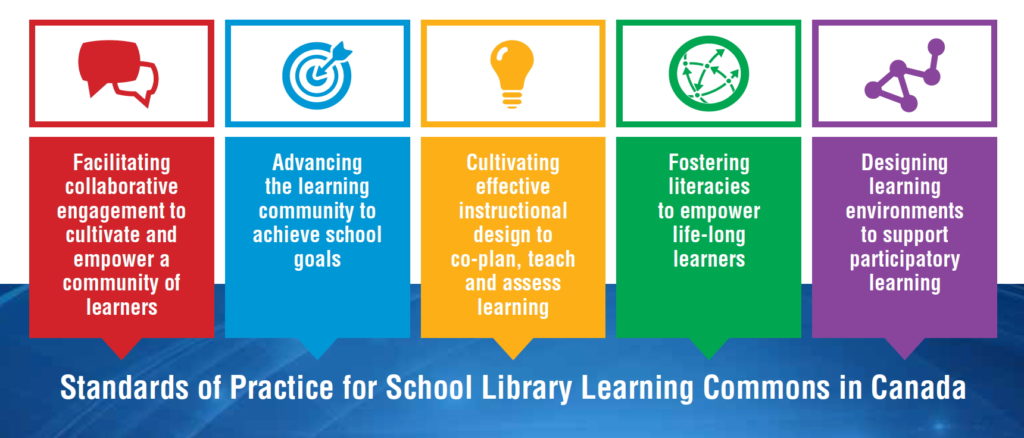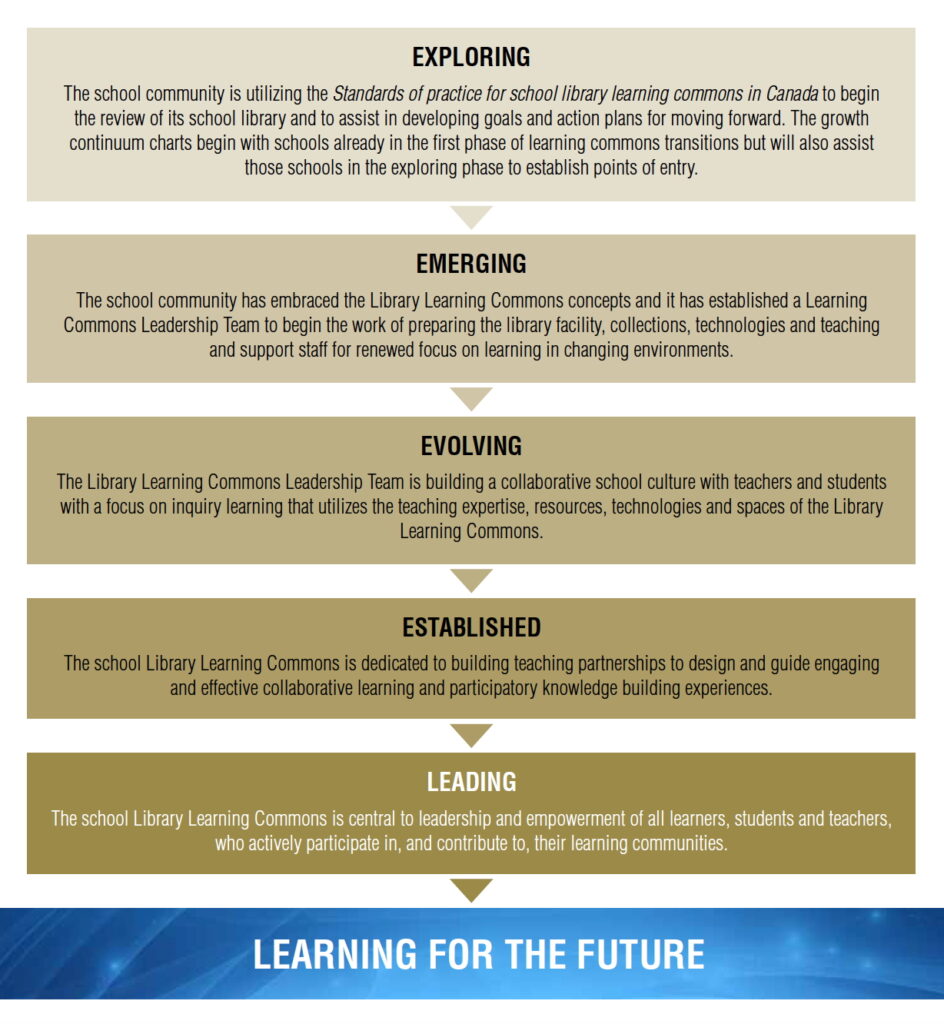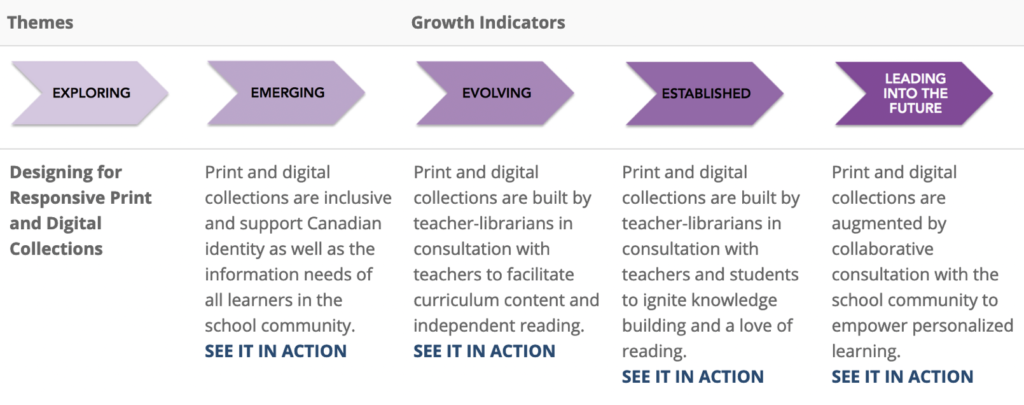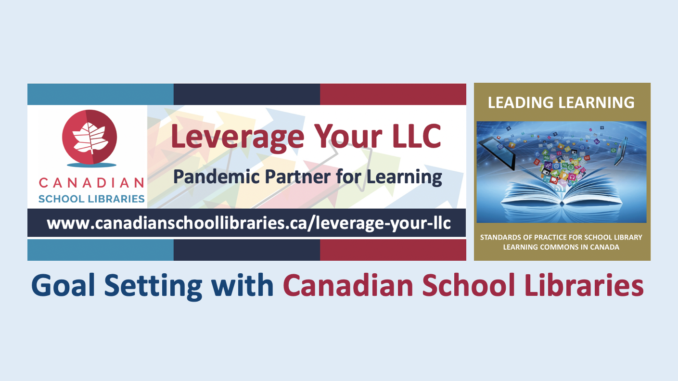
By Janine Gleeson
Pandemic Learning and the Library Learning Commons
Since the beginning of pandemic learning in March 2020, the library learning commons has established itself as an essential service to both students and staff. From providing expert guidance to online programs and digital databases, to incorporating inquiry-based resources and instructional support, the library learning commons has proved itself invaluable to student learning. As we continue our journey in remote and hybrid learning, it’s essential that the library learning commons continue to develop a robust program to support both in-person and distance learning by establishing and reflecting on overarching program goals.
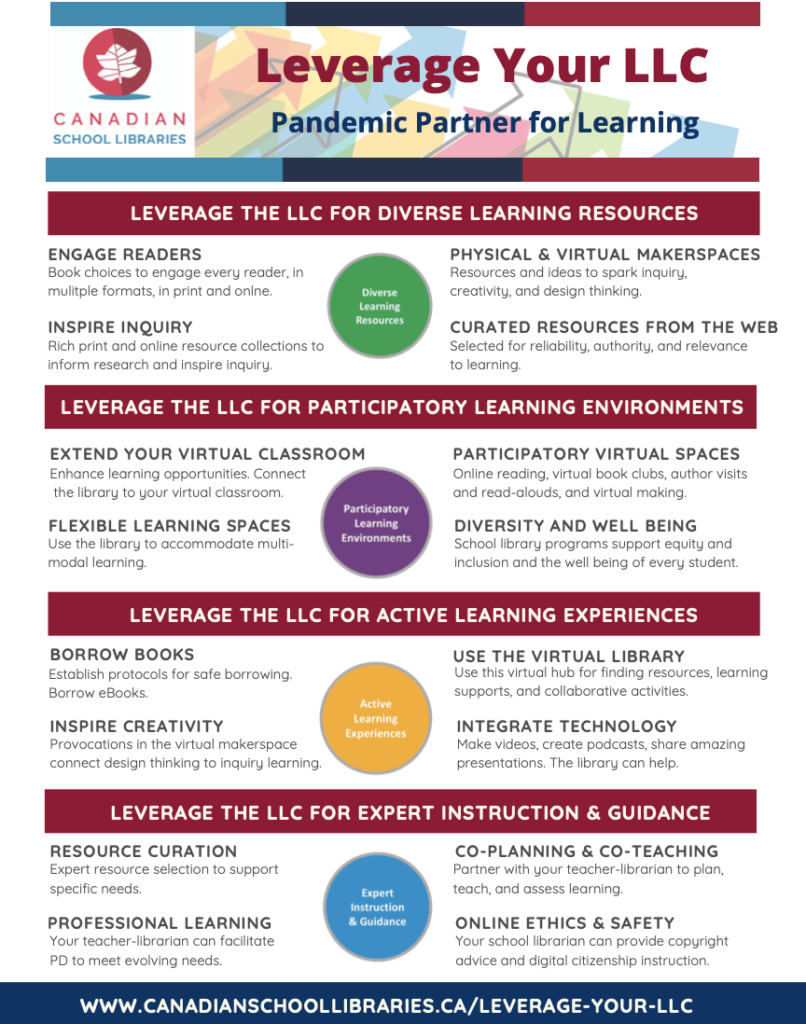
Framework
Canadian School Libraries (CSL) has developed the responsive document, Leverage Your LLC: Pandemic Partner for Learning to help teacher-librarians focus their goals (or as I like to refer to them as – learning intentions) for such an unprecedented year. In addition to the thematic standards, CSL has also done the legwork by providing an inquiry question to center your actions on:
CSL Inquiry Question:
“How can schools maintain critical school library learning commons benefits during pandemic times?”
Leverage Your LLC: Pandemic Partner for Learning
It’s important to note that while each library learning commons will continue to develop across all areas of CSL’s Pandemic Partner for Learning, specific and targeted learning intentions and actions can remain a focus for the year.
Focus
Cultivating meaningful learning intentions is a powerful approach to establishing a library learning commons that is responsive to the school community.
The following is an example of how I thoughtfully structured my own program for the year using CSL documents.
- Objective
Construct a concise objective rooted in the inquiry question prior to delving into the thematic standards.
Example: “For the 2020-2021 school-year, the Library Learning Commons at L.A. Matheson Secondary will establish itself as a Pandemic Partner for Learning based on the following document and inquiry question created by Canadian School Libraries.”
This component of your framework is critical and often overlooked. Essentially, this statement informs readers of the overarching mission of your library learning commons for the year. The statement is simple, yet effective.
- Thematic Standards: Learning Intentions and Actions
There are four possible areas of growth to select from for your focus:
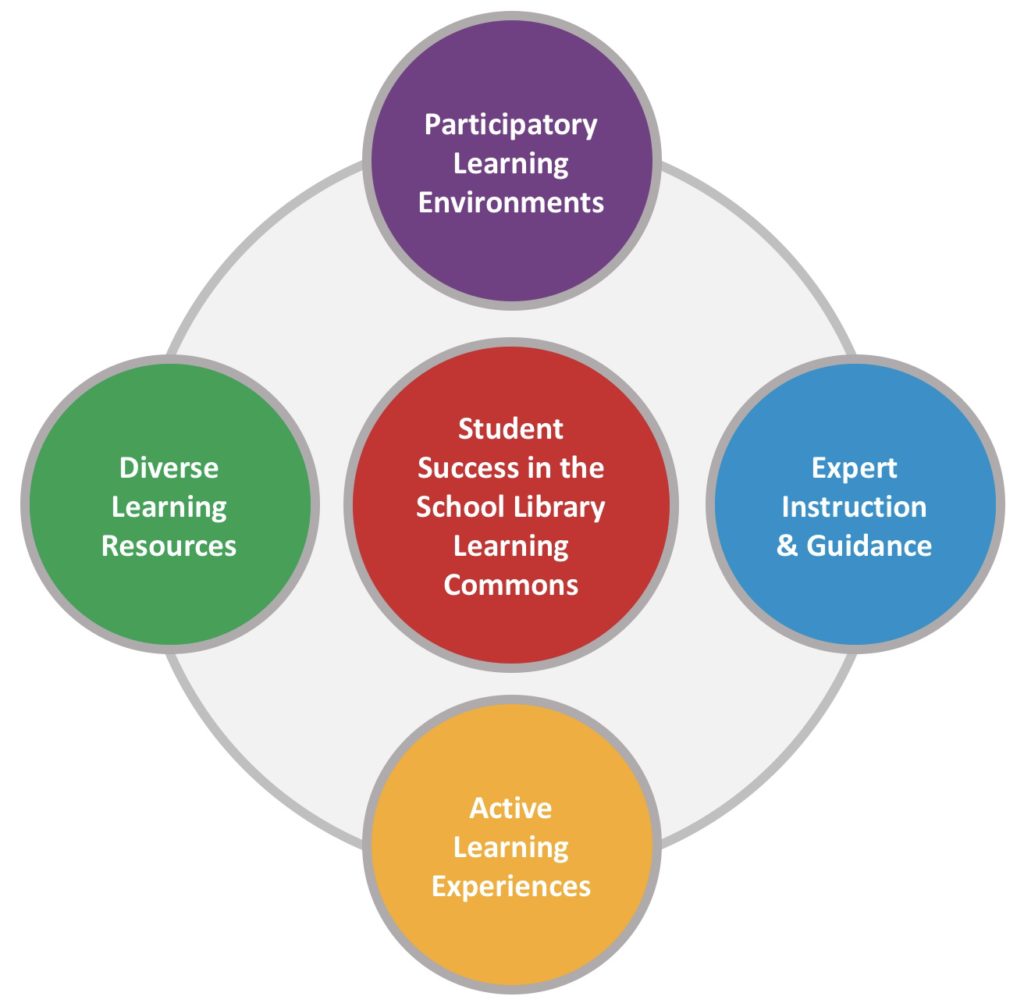
- Diverse Learning Resources: Engage readers; physical and virtual makerspaces; inspire inquiry; curated resources from the web
- Participatory Learning Environments: Extend your virtual classroom; participatory virtual spaces; flexible learning spaces; diversity and well being
- Active Learning Experiences: Borrow books; use the virtual library; inspire creativity; integrate technology
- Expert Instruction and Guidance: Resources curation, co-planning and co-teaching; professional learning; online ethics and safety
Guiding questions to help you narrow your focus:
- How can I best support my school community?
- How have the needs of my school community changed?
- How can I connect to students and staff?
- How can I make the most impact this year?
- What is important to my school community and/or district?
Using these guiding questions, narrow your focus to one to two points per theme. Alternatively, if you a passionate about one theme, you can focus on all points listed for that standard. You know your school community best and what they could benefit from the most. The purpose of being mindful in your learning intentions and actions is to ensure you are not overextending yourself and so that each action receives proper thought and analysis.
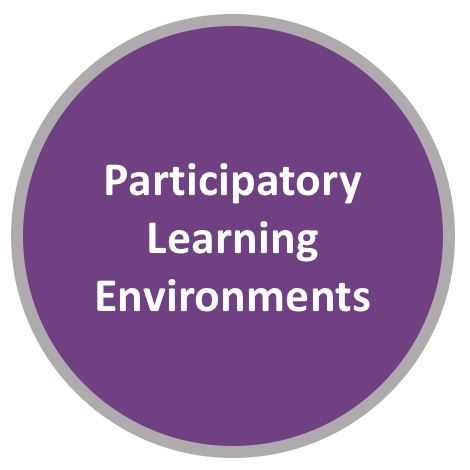
Example: LA Matheson Secondary Participatory Learning Environments
Learning Intention:
- Extend Your Virtual Classroom
- Participatory Virtual Spaces
- Diversity and Well Being
Actions:
- Develop a website for staff and students
Enhance learning opportunities by extending the virtual classroom (collecting and curating resources from the web).
Visit the LA Matheson LLC website here: bit.ly/lam-library
- Connect and build student community
Establish participatory spaces by harnessing the power of social media and Microsoft Office365 to connect with students and promote virtual reading activities such as: Virtual Book Review Council, Read-Along, Library Council etc.
- Connect and build staff community
Continue to use the Library Team to connect with staff and publish digital resources, lesson ideas, tech tips, professional development, inquiry, etc.
- Diversity Audit
Equity in action. Build a school community collection that is inclusive of gender, race, expression, culture, and disability and seeks to empower student ownership over the collection while being more representative of the school community.
To view my entire department plan for the year please visit: bit.ly/32PPZg6
Growth Indicators
Authentic assessment of your library learning commons progress can be measured using CSL’s proficiency scales with their comprehensive document, Leading Learning: Standards of Practice for School Library Learning Commons in Canada. CSL provides an overarching proficiency scale for a library learning commons and in-depth scales based on each standard of practice.
Goal Setting in Action:
The culminating product of your learning intentions, actions, and growth can be individually analyzed to determine your success and areas of improvement. The following is an example of how I assessed my attempt to ‘Leverage the Library Learning Commons for Diverse Learning Resource & Participatory Learning Environments: Responsive Print Collections’ at LA Matheson Secondary.
Department Goals
Learning Intention:
Engage Readers & Design for Responsive Print Collections
Actions:
- Reconfigure Graphic Novels/Manga
Learner-centered, provides quick easy access to materials, fosters a greater enjoyment of reading, and gives independence over learning and collection.
- Diversity Audit
Equity in action. Build a school community collection that is inclusive of gender, sexuality, race, expression, culture, and disability and seeks to empower student ownership over the collection while being more representative of the school community.
Growth Indicators
Using CSL’s Leading Learning proficiency scale for ‘Designing for Responsive Print and Digital Collections’ L.A. Matheson’s transitional growth will be measured.
Emerging Beginnings
Before I started this project, I was frustrated with our graphic novels and manga section. It was disorganized, included aging and simply unappealing volumes, titles of the same series had different spine labelling, and students were frustrated that they couldn’t easily find what they were looking for. This section of the collection was unresponsive to our school community. I had to do something. Our graphic novel/manga section is the most heavily circulated material and the physical space just wasn’t evolving with our student’s diverse needs.
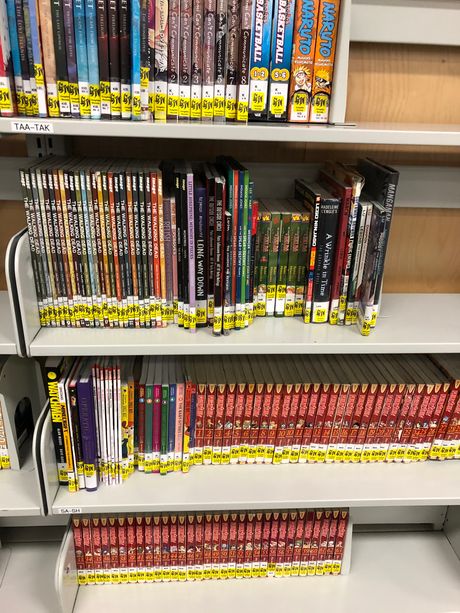
Novels & Manga
As you can see, the graphic novels and manga were interfiled. With these two sections combined, the shelving space wasn’t maximized since each shelf had to accommodate the size of a graphic novel. Visually, this was unappealing, and many great standalones were hidden amongst the sea of manga or volumes of graphic novels.
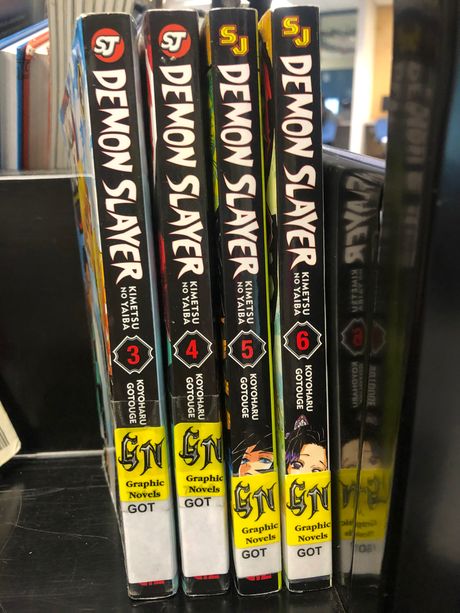
Finally, this is just an example of how some of the spine labels looked prior to re-labeling and cataloging. Some yellow graphic novel labels were above the Dewey author lettering while others were below. In other cases, volume numbers were covered by the graphic novel label and there was no volume listed on the spine label either making it difficult for shelving and for finding the correct volume. I didn’t find this organization engaging or empowering. I wanted to increase the accessibility of the collection so that students could take ownership over it and their reading. By making the collection more accessible to students, I hope even more learners are encouraged to use the collection and are inspired to read and share that passion with one another.
Process
To begin, I had to decide how I could effectively reorganize this section.
Some guiding questions I used were:
- Do I keep the manga and graphic novels interfiled, or separate them?
- How can I increase student ownership over the collection?
- How can the collection be more responsive to student needs?
- How can I diversify this part of the collection?
Other guiding questions from Canadian School Libraries, Leading Learning: Standards of Practice for School Library Learning Commons in Canada found under ‘Designing Learning Environments to Support Participatory Learning’ in Appendix 1 page 30 included:
- “How do you assess the space and collection to know what is working, what is not and what could be tried to better support learning?”
- “What does a 21st century collection encompass? How do you provide/activate access to the collection?”
- “How do you strategically organize the collection in order support participatory learning?”
Student and staff voice were essential to the entire process. I took Instagram polls, asked my Senior Library Council members, sought out staff member opinions, and asked students who were actively used this part of the collection regularly.
As a collective, this is what we decided would work best for our school community:
- Separate the graphic novels and manga
- Catalogue books in this section by title, not author
- Reduce spine label to single letter (ex. ‘Demon Slayer’ before: GOT; ‘Demon Slayer’ now: D)
- Include volume for consistency
- Genrefy graphic novel section
- Big, bold signage
- Include front facing books
To view of how I catalogued the books from here please visit: bit.ly/lamgn
Final Product: Leading into the Future!
The strategic reorganization of the graphic novels and manga has empowered LA Matheson’s learners to explore their needs and interests while fostering an active reading culture and personalized learning. There is consistency in labelling, titles are much easier to find, and finally the entire section is visually appealing! The final product has great signage, front facing books, and most importantly is responsive to our school community.
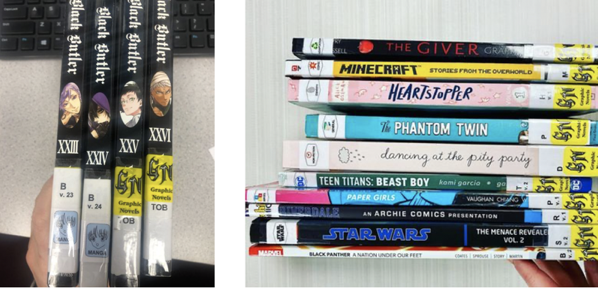
Culminating Approach
Implementing goal setting into my practice has been transformative for my professional development and for my school community. I encourage you to delve deep into CSL’s documents and take a critical look at how your learning commons is serving your school community and what you can do to transform your space. Don’t get discouraged if you don’t meet all your learning intentions for the year. Simply take what you have learned, adjust, and apply them to next year. That’s the beauty of an informed practice approach!
Works Cited
Canadian School Libraries (CSL) 2020. Leading Learning: Standards of Practice for School Library Learning Commons in Canada. Available: http://llsop.canadianschoollibraries.ca
Canadian School Libraries (2020, September 9). Leverage Your LLC: Pandemic Partner for Learning. Available: https://www.canadianschoollibraries.ca/leverage-your-llc/

Janine Gleeson is currently the teacher-librarian at LA Matheson Secondary in the Surrey School District. Janine’s current interests revolve around developing an inclusive collection, learning commons design, and adding greater voice, choice, and agency for her students in the library learning commons. You can find her on Instagram @lamatheson_library and Twitter @JanineGleeson.
